Combined manicure: pros and cons, types and techniques of execution

A manicure for a modern girl is an almost obligatory procedure; without it, most ladies feel insecure. Well-groomed nails are an integral part of the complete image of the fair sex, they reveal her inner world and indicate an elementary desire to take care of her appearance. There are many approaches to performing such a procedure, but recently combined manicure has become increasingly popular.

What it is?
Many girls, who have not previously encountered this concept, mistakenly believe that a simple use of a combination of colors is assumed (as opposed to the most classic one-color manicure), but in fact "combi" is something else.

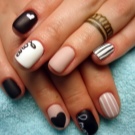
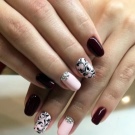
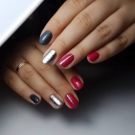


First, you need to understand that nails can be processed in completely different ways. Someone got used to the fact that the same cuticles are removed by hand with ordinary nail scissors, others in salons are more often machine-processed. At home, a manicure often does not imply any additional procedures, representing only putting things in order with nails, and expensive masters combine cosmetic treatment with healing and softening procedures. All this is usually called different types and techniques of manicure, but some clients, for certain reasons, cannot make an unambiguous choice in favor of one particular technique.




Accordingly, a combined manicure, by definition, is a procedure that combines different features of individual techniques, thanks to which an optimal result can be achieved in any conditions.For obvious reasons, such nail care can only be performed by a qualified master who has all the necessary equipment and is trained to use it.
Advantages and disadvantages
The advantages of a combined manicure are not so numerous, but they are very significant - which is why the demand for such a procedure has only been growing in recent years. There are, of course, disadvantages, but first things first, let's start with the good. First of all, the very fact of combining various techniques and techniques allows us to take the best from each, and at the same time weed out those reasons why the choice of a particular technique is not obvious. Thereby combi-manicure could be called the best technique, if only its description was not so vague.




Another notable advantage of choosing a combined manicure is that, unlike all competing methods, it allows you to choose the optimal conditions for you. This option is suitable for everyone, since it does not consist of a specific set of tools and actions. - you just turn to a good master, tell him your wishes and possible fears, and he himself decides how to achieve the result you need. Thanks to this, today even those representatives of the fair sex can do a manicure who, not so long ago, could not even dream of it because of too hard cuticles and sensitive hands.



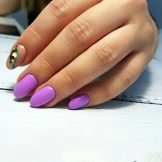
However, there are also disadvantages, and they are the reason that the combined manicure has not yet supplanted the "classic" techniques. One of the important disadvantages is called the tangible duration of the procedure. - although such a manicure is softer and more pleasant, it is possible that an active, constantly busy woman simply does not have enough time for it. If you want to give preference to just such a manicure, get ready for the fact that now this procedure can take half a day, and not be limited to the usual hour.




While the combination manicure is often praised for its ability to meet the ideal needs of each individual client, it must be remembered that in practice it is not always so easy. Millions of girls today do not use the services of expensive salons, but self-taught craftswomen who provide such services right at home.
The technical provision of such a master can be rather limited, in a home salon there are far from always all the possibilities to achieve the perfect combination of manicure methods. At the same time, even professional beauty salons will not always turn out to be a worthy alternative - their services are more expensive, and even the flow of those who wish here may turn out to be such that it will not be possible to get through to the master soon.


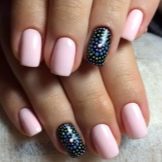

A completely separate topic is the qualification of a master who deals with manicure, or rather, his ability to select the right combinations of techniques. The fact is that a master is usually judged by his mastery of a particular technique, ideally several techniques, but even the ability to do a manicure in different ways does not mean that he clearly understands your special needs. An improperly selected sequence of individual operations or a mistake in choosing or refusing to take certain steps can lead to the fact that the person who is theoretically able to give you the perfect manicure will actually do more harm than good.



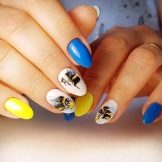
From all of the above, it turns out that it is possible and even necessary to try a combined manicure, but not in all cases it will immediately turn out to be a panacea. Sometimes you need to alternately resort to the services of different masters in order to find a really good one, and appreciate all the advantages of such a procedure.
Views
Although different types of combined manicure involve almost any combination of manipulations, in fact, this concept includes only three main types of this cosmetic procedure. Each of them deserves a closer look.
- Combination of hardware and trimming techniques (the so-called dry manicure) is used in situations where the overgrown cuticle is quite dense and firm. Because of this, it can be quite difficult to remove it with a cutter, but the latter is still needed, since it is convenient for processing lateral nail ridges. Accordingly, the sides of the nail are processed with a cutter, and already with the cuticle they work with the help of nail scissors.




- Hardware or trim technique can be combined with the so-called European. The peculiarity of the latter is that the cuticle in this case is usually preliminarily softened (because the method is also called "wet") with the help of special cosmetics. Since these funds only soften, but do not completely dissolve the cuticle, you also have to resort to the help of scissors or a cutter - this gives reason to call the method a combined one.

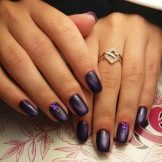


- Trim or hardware manicure can also be combined with various SPA techniques. Perhaps this type of procedure is more expensive than others and takes more time, but if you need special care for your hands, it is practically no alternative solution. There can be quite a lot of options for the actual spa procedures, however, most often they use various masks for the hands, or they carry out paraffin therapy.


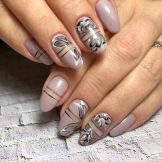

Execution techniques
Many women prefer to do their own manicure at home - if your skin and nails are not too demanding in care, then this is quite possible. Another thing is that the perfect manicure is unlikely to be done right away, so you will have to train for some time with not the most successful results. However, it's worth it, so let's take a step-by-step look at how to properly make yourself a manicure for beginners.


The first example would be a combination of edging with hardware - it is this technique that is most often used by home craftsmen and simply by girls who want to take care of themselves on their own. To begin with, you should thoroughly disinfect your hands and instruments to prevent possible infection. After that, with the help of special solvents, the old varnish coating, if any, is removed. The nails cleaned from varnish are filed with a file to give their tips an aesthetic shape.


After that, they move on to the most difficult part of the treatment - the removal of the cuticle itself. First, with a special thin cutter, its lower layer is removed, as a result of which it is, as it were, lifted. After that, the master carefully cleans the surface of the plate from the remaining dust and removes the main part of the puckered cuticle using nippers. The final removal of this part of the nail is carried out with the help of another cutter - a spherical one, it is thanks to it that an even edge is achieved.
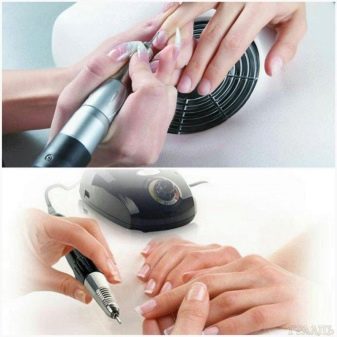

In order not to infect, it is still recommended to leave a tiny part of the cuticle, however, the master, with the help of a special metal pusher, pushes it aside in order to make it as thin and invisible as possible. Thanks to the last operation, the nail bed is lengthened as much as possible, and now it is possible to apply reinforcing agents or new varnish on it.
If we consider the combination of an edged manicure with a European one, then in general the procedure seems to be very similar - in particular, first, you also need to remove the old coating and file the tip of the nail plate. The principal difference is the method of removing the cuticle, which in this case is treated with softening cosmetics, after which it is removed with an orange manicure stick.


Due to the fact that the cuticle becomes much softer, the procedure is greatly simplified: firstly, there are no obviously uncomfortable sensations, and secondly, the removal process itself is controlled much more carefully, therefore, the chances of injury are minimized.However, if you are already interested in such a combined manicure, you should pay your attention to a certain minus: for all its merits, the European technique begins to give a lasting result only after three to five sessions, and before that, uneven and unpredictable growth is often observed.
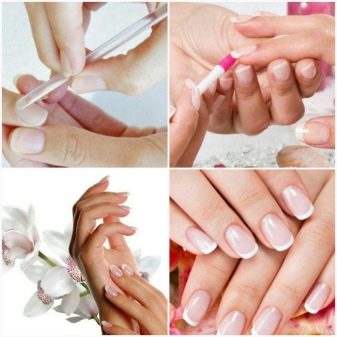

Design options
The final chord of any manicure is the application of varnish to emphasize the unique image, and the combined one will not be an exception. This technique does not imply any restrictions in the choice of tone or pattern, therefore you can use absolutely any ideas. However, there are certain unspoken rules that help you choose a win-win design option or avoid common mistakes.

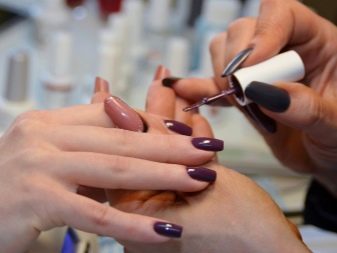
Small nails are usually not advised to overload with large drawings with an abundance of details. - because of this, the already small nail plates will seem even smaller. In this situation, a monochromatic varnish (with glitter) or simple patterns of a relatively small size will look much better. A good solution would be to focus on one of the fingers (usually the ring finger is used for this purpose) - with all monochromatic nails, one on each hand is made with a colorful pattern or with a certain pattern.


Traditionally, a manicure is much more often glossy than matte, but the latter is not only not tasteless, but also very elegant - moreover, it is always appropriate and never considered provocative. An additional plus in favor of such a solution is the fact that it is not worn out, this is one of the easiest ways to stand out without being too loud. Another interesting option is the use of two varnishes of the same shade on each of the nails.one of which would be glossy and the other matte. Such work presupposes considerable subtlety, the master must have great experience and a confident hand, but the result in the best examples provides a fascinating effect of the texture of the nail plate.

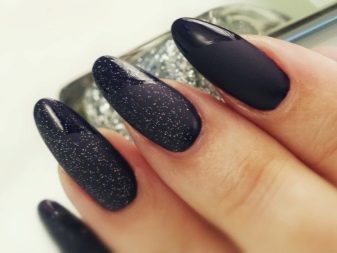
As for more complex patterns, they are usually applied only to long nails. The client herself will choose a specific image according to her own taste, but it is worth remembering that in this case the nails will become another mirror of the soul. For this reason, it makes sense to choose the image that is somehow connected with the life of the girl herself.
Care Tips
Numerous reviews from both clients and the masters themselves indicate that correct, timely and regular nail care simplifies each subsequent manicure procedure.
So that taking care of your nails does not cause harm instead of benefit, pay attention to the recommendations regarding their treatment at home.
- Do not throw your own cuticles - remember that you need to periodically remove them yourself, even without going to a specialist. If you ignore this recommendation, you will have to resort to repeating the manicure more often, and the procedure itself will be longer, expensive and uncomfortable each time.
- Carry out cuticle removal using special tools. It is advised to do this in one motion so that it comes off with a solid strip - if everything is done correctly, it will maintain a decent appearance for a long time without the formation of burrs.
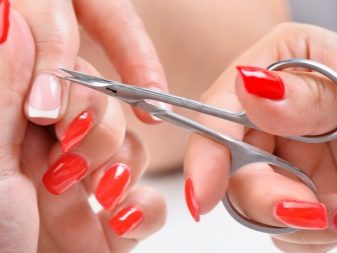

- It is unacceptable to remove cuticles with bare hands or using sharp nails - there are special cosmetic tools for this task. In the absence of proper care for them (first of all, regular cleaning and disinfection), you run the risk of infecting when removing the cuticle, therefore the disinfectant should always be at hand.
- It is much easier to remove cuticles if you moisturize them regularly with special oil. Moreover, the same procedure somewhat improves the appearance of this part of the nail.Moisturizing must be carried out daily, even several times, and it is highly undesirable to break the regularity - it is enough to skip just a couple of times, as the cuticle will return to a tough and unattractive look.


- Although the cuticle can spoil the appearance of the nail, it actually plays an important role in the body, protecting the place where the growing nail contacts the skin from bacteria. For this reason, it cannot be removed completely - you should always leave a small strip at the very root to avoid the penetration of infections.
- Modern methods involving unedging are considered to be the best aesthetically speaking - they are guaranteed to ensure a smooth cuticle edge and involve a lower risk of injury. At home, everyone, even the masters, is usually limited to the edging method, but if possible, you need to resort to it as rarely as possible.

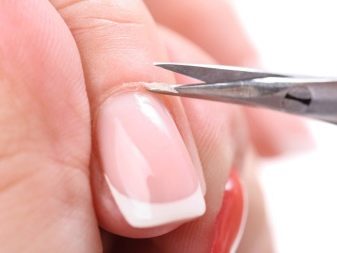
- The body gets used to certain external influences, and its change, even for the better, can lead to a short-term, allegedly worsening of the condition. So it is with the cuticle - it seems to adapt to one of the removal methods (edged or unedged), and when changing the method, such unforeseen consequences as accelerated growth and rapid loss of neatness are possible. However, over time, the nails will get used to the new way of doing manicure, so the main thing is just not to alternate them all the time.
- Pre-soaking the nails in many cases reduces the discomfort from performing a manicure - since the nail plate becomes softer, it no longer resists trimming so much, so the procedure is painless. However, in recent years, experts have more often persuaded clients to abandon this idea, since water often promotes the penetration of microbes into the smallest wounds, and even can become a convenient breeding ground for bacteria that have already been on the skin.

For information on how to do a combined manicure at home, see the next video.








